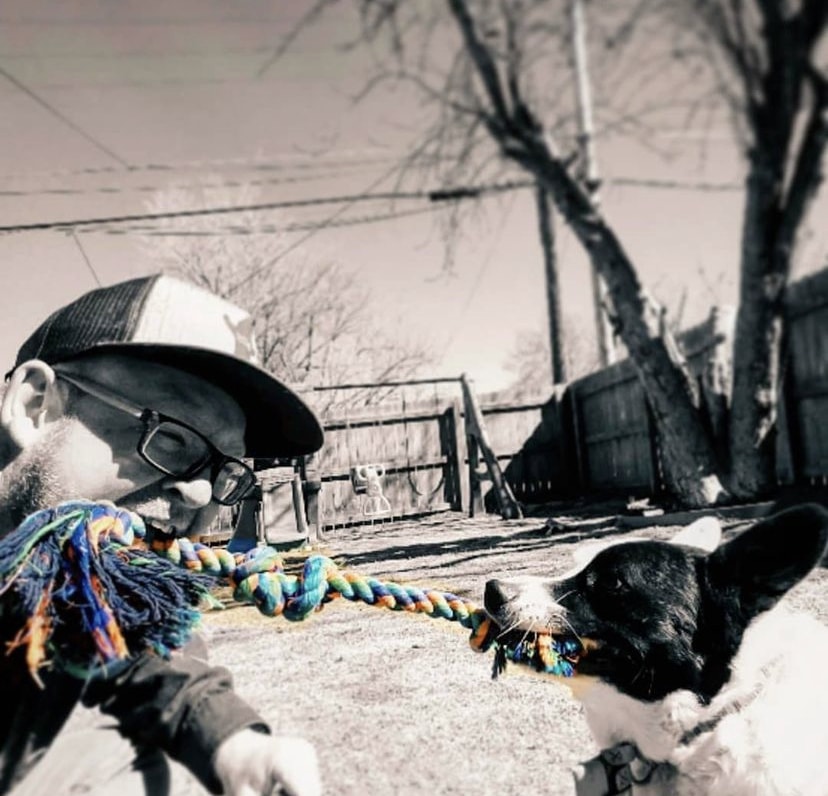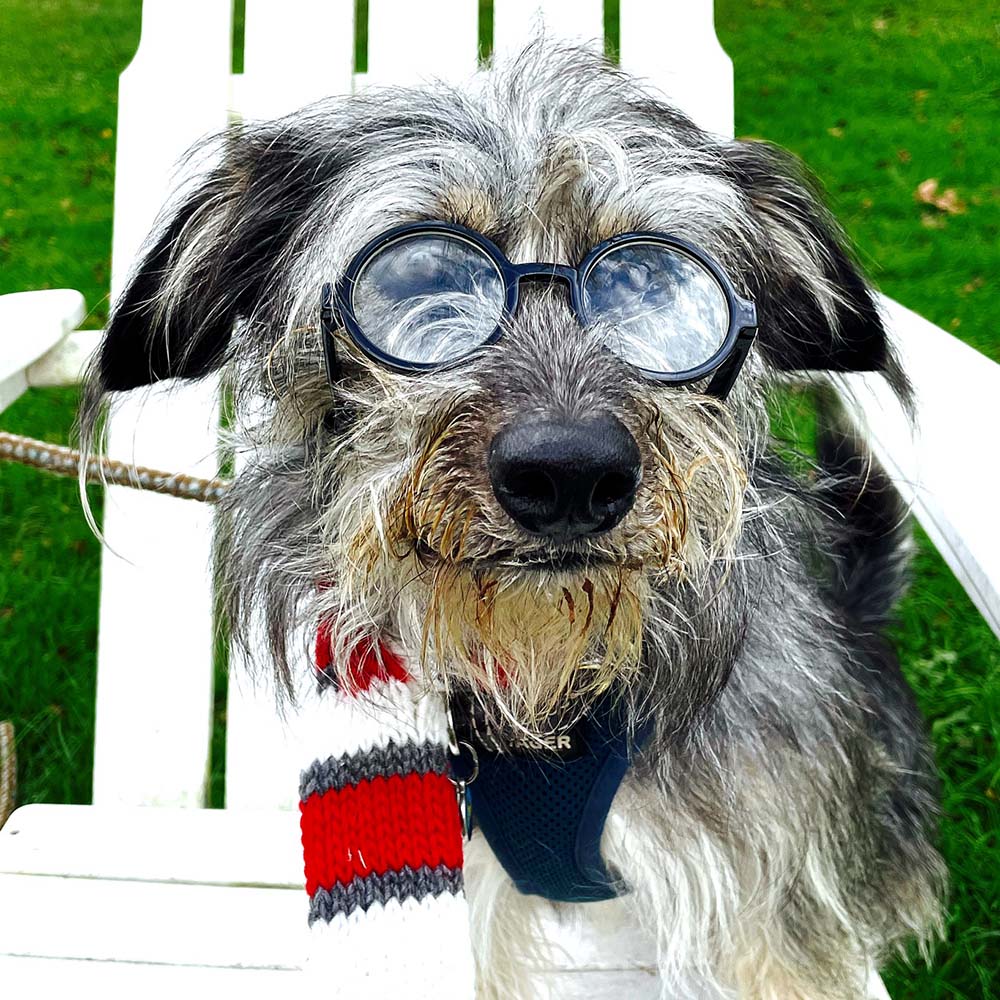Dear Dog,
We love you dearly, you know that, but you are driving us crazy. We need to talk about the barking. Look, we get it, you’re a dog, you heard something outside, but enough is enough. Our neighbors are leaving us nasty notes on the door. People are posting about you on the neighborhood site. It’s just too much. I bought the puzzle thing, I purchased the subscription boxes, I got those treats you like, I even looked the other way when you chewed up my slippers, but if we can’t fix this constant barking, we’ll have to think about a new arrangement. We’re running out of patience.
Love,
Human
Dear Human,
I’m sorry, I know you’ll be surprised to hear it, but dogs bark. I’m dealing with some of my own shit right now too. You’re not the only one! Do you have any idea how boring it is here? You get up at 6, you’re gone by 7 and then I’m alone… all day. What the hell am I supposed to do until you get back at 5, sit in front of the television like you do? I’m keeping you guys and this house safe. OK? You don’t get it: while you’re gone, there are intruders at the gate, like non-stop! I don’t know who these people are. They just approach, so I bark, and they go away. You’re welcome! You should be leaving me a thank you note or a sirloin, not some passive-aggressive letter. I’m at the end of my leash! Oh wait, no I’m not, I’m sitting alone inside this stupid house waiting for you to come home so finally I really can be at the end of my leash. Seriously, can we go for a walk later?
Love,
Dog
_________________________________________________________________________
My name is Drew Webster, and I’m a dog trainer. More specifically, I work as a behavior consultant in a lot of different roles, but primarily I’m a dog trainer, and I’m on a mission. I want to help those people who love dogs understand them better while simultaneously helping dogs be more successful in their [domesticated] environment. I am also a member of the growing community of trainers working towards a paradigm shift in the way we think about dogs, and dog behavior in general. Our ultimate goal is to have a positive impact on training practices, techniques, and outcomes.
Dogs have “species-typical behaviors.” They bark, jump, whine, run, paw, pull against pressure, chase things that move, scratch with their paws. And yes, they bite. When people call the dog trainer, they most commonly want one thing: they want their dogs to stop doing dog behavior.
Here’s the way I see it: The biggest “problem” is that dogs are exhibiting their normal behavioral responses to circumstances that are abnormal for them. That said, I want to help both the dogs and the people who love them. I do this by designing a behavior map. That is, we construct behaviors we want to see rather than simply trying to stop them as they begin occurring. It’s like going on a journey. I want you to come on this journey with me. In this Love, Dog training series, we’ll take a deep dive into some of those undesirable — yet very normal — dog behaviors. I’ll share some of the cases I’ve personally been involved with and show you how approaching the dog from a place of listening, learning, and compassion will build better lifelong behavior outcomes for people and dogs.
The above letters from Human to Dog and Dog to Human are like so many of the cases I see. Barking is a normal behavior response for dogs. Typically, I group barking into one of three types:
- ALERT barking occurs when dogs notice an environmental change, through either sight, sound or scent. This typically results in the dog being startled, which can then lead to barking (initially, at least, in short bursts).
- DEFENSIVE barking often appears as though the dog is trying to increase the distance from something — or someone — by either walking away or charging forward with steady, continuous barks.
- DEMAND barking is usually directed towards the humans they cohabitate with. Sometimes single barks, sometimes occurring in groups of barks, demand barking typically means they want something such as attention, an object, food, etc.
The case illustrated in the two letters above is based on one of my clients who I see regularly for virtual training appointments. Their dog Oscar presents with all three types of barking. He’s a fluffy, white Bichon Frise with a big voice and an even bigger attitude—it’s a good thing he’s so adorable and that his owner loves him dearly.
Case File: “Oscar the Grouch”
Oscar lives in Steamboat, Colorado. Steamboat is a popular resort town that thrives on tourism during the ski season. For about three months out of the year, the year-round population is small, and things generally stay quiet and low key. During these times, Oscar and his human family live in peace and harmony. However, the other nine months are unbearable. The homes around them are largely second homes that don’t have permanent residents throughout the year. They are often rented-out through vacation rental sites and have become a revolving door of unfamiliar and irritating stimuli, which causes Oscar to bark daily, often incessantly for hours. Alas, his barking continues even if they remove him from the sources causing the barking. I interviewed his people, Kathy and John, and after an hour-long video consultation, I was starting to get the picture.
My case history notes included details about his barking while looking out of the large glass windows, which face other homes. Not coincidentally, I suppose, during the consultation either Kathy or John had to continuously move him or grab food puzzles to keep him busy because if they ignored him for too long, guess what? BARK, BARK, BARRRRRKKKK! He didn’t just bark at strangers outside. Oscar barked if he got grouchy. Oscar barked at various sounds. including garbage trucks, airplane noise, car horns, the sound of car doors slamming, the jingling of dog collars, other dogs barking, people talking outside, and selective television programs (he’s picky!). He also barks when he sees dogs on walks or to simply get attention from Kathy and John. He likes to be held and touched and will demand human interaction throughout the day, even while they’re trying to eat dinner.
When I meet with people, it’s important for me to see and experience their dog’s behavioral repertoire. My job is to remain objective as my clients describe the dog’s motivation and behavior patterns. I must use my own observation skills as well. That’s how I became both informed and curious about the behavior in this case. What I concluded with Oscar was that he uses his voice through much of the day. He uses it as an alert, and to demand the things he needs in his home. It works quite well for him!
After a lengthy analysis of all Oscar’s medical and behavioral history, I built a map (a construct) for Oscar’s people to follow. First, we had to do something to relieve the pressure Oscar felt that led to his alert barking. I asked Kathy and John to go online and order some privacy stickers for the windows. These are simple stickers that give the glass a frosted appearance — or pattern, if you prefer — allowing light to flow into the space but stopping the dog’s ability to see any stimuli through the window. This doesn’t fix the problem entirely, but it’s the first step at decreasing the stimuli that trigger the barking. Next, I asked if they had any air purifiers or smart speakers. They did. We used white noise from the air purifier (placed near the window) and nature sounds from the smart speakers to drown out the acute sounds coming from outside the house during the day when Kathy and John weren’t home, or were home, but some distance from Oscar.

Shutterstock: CL Shebley
Now we were ready to start the actual training. Dogs learn best if you make training exercises and sessions short, focusing on just one or two goals at a time. I had them do relaxation conditioning on Oscar’s dog bed for five minutes each day, three times per day. After only a few days, he started to enjoy spending time on his bed: he would flip onto his hip and relax on the bed rather than sitting in a sphinx pose ready to move.
One week, during our virtual check-in, I observed Oscar barking at John to get him to toss a ball. This was an “ah-ha” moment for me. Dogs have so little control over their environment. When a dog uses behavior, such as barking, they’re really attempting to control aspects of their environment and acquire a sense of autonomy and control. So, I decided to build an ON and OFF switch for the barking. It took some convincing, but John agreed to “play ball” with me. I asked him to hold a ball in his hands and tease Oscar a bit. If Oscar barked (a “demand”), John was to say, “GOOD SPEAK” and toss the ball. We did this several times and started to cue the behavior (barking) with “OSCAR, SPEAK.” When he did this, John tossed the ball.
Two days later we changed the rules. Now that Oscar would speak on cue, it was time for the OFF SWITCH. I had John tease and prompt the barking. When Oscar barked, John had to say, “GOOD SPEAK” and encourage Oscar to speak over and over without throwing the ball (Oscar’s desired outcome). John then shows Oscar the cut off signal: he slides his hands sideways moving from the center of the body outward, simultaneously saying, “ENOUGH.” Next, when Oscar paused his barking, John would say, “GOOD QUIET” and would throw the ball. Think about it like Rinse and Repeat . . . and keep at it.
Soon, a new pattern developed. First, the barking is cued; then Oscar is told it’s enough. His quiet behavior gets the desired outcome. Oscar got this, and they now had a way to prompt him to bark and to introduce the cue he now understood to stop barking. I asked them to capture and reinforce as much of Oscar’s calm behavior as possible over the next few weeks. In other words, they would “catch him” being quiet,” and randomly reinforce this desired behavior. The idea being that quiet, calm dogs get little to no feedback while barking dogs get tons of feedback.
Between the management techniques, the barking and quiet games, and some additional work I had them do on-leash, they and Oscar have made tremendous progress. They were able to remove the privacy stickers from their windows and play “look at that” on busy holiday weekends. They reward him for staying calm and quietly watching neighbors arrive and enter their homes.
The key to Oscar’s success was teaching his owners how to manage the environment, reinforce behaviors they wanted, and avoid punishing Oscar for behaviors they didn’t like. I even gave them a theme song for their training sessions. They turn up the Rolling Stones, look Oscar in the eye, and tell him, “…you can’t always get what you want, but if you try sometimes, well, you just might find you get what you need.”
So, yes, there IS hope! If you’re struggling with your dog’s behavior, the worst thing you can do is nothing. Something we humans might do better at is to learn that asking for help is a bigger act of courage, compassion, and kindness than trying to go it alone.
Note/Disclaimer: The names of the clients and their dog have been changed to protect their privacy. This case study is offered as a way to inspire you and to suggest that undesirable behaviors in dogs can often be changed with the proper intervention. Each individual animal requires an individualized approach. Tips and concepts that get you thinking about working with your dog are great but should not be used as a substitute for treatment. Professional trainers have knowledge and skills that take years to obtain, and implementation of training takes a degree of competency. Love Dog is not responsible for any loss, injury, claim, liability, or damage caused by your attempts to replicate any training methods or concepts learned from this site.
subscription
LOVE, DOG














